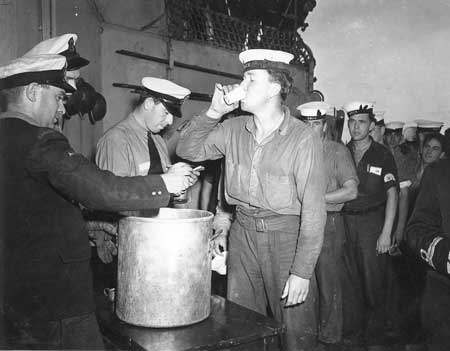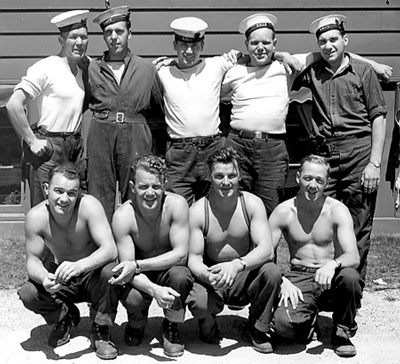
By Clare Sharpe
Museum Staff Member/Webmaster
Social and cultural changes over the centuries, for example, are reflected in what sailors (technically, “seamen”) wear to work, rest and play. Certainly, sailors have always dressed to impress, and in Getting Tiddley, a retired salt looks at some of the ways people of his generation set out to make their mark.
Another area where old and new customs can converge is at naval parties known as Banyans. Banyan days began with England’s Navy during the reign of Queen Elizabeth I, but their format continued to evolve over time.
The custom of marking a sailor’s first passage across important geographical parallels with a special ceremony is so old that its origins are hard to trace. In The Art of Crossing the Line, we look at how this custom lives on in modern times through a ceremony called Crossing the Line, an important rite of passage even for 21st century sailors.
Although it’s far from being customary or the norm, Canadian ships and sailors have occasionally featured in Hollywood films, and these brushes with the bright lights are examined in Hollywood and Canada’s Navy.
For a period during the Second World War, the Navy itself was in the entertainment business with its popular touring “Meet the Navy” show.
For centuries, The Ship’s Bell has had a significant role in the traditions and customs of a sailor. It’s been used to guide the daily rhythm on a ship as its tolling marked passing time and indicated the changing of the watches. The ship’s bell is associated with many other traditions but probably none more memorable for families than the shipboard christening of a child.
In Chapter and Verse, we look at the way Bible quotations were incorporated into naval messages and signals as a shorthand for communication purposes. And in Station Cards in the RCN, the use of identification papers called station cards to track a sailor’s career and personal information is examined.
Creature Comforts celebrates the long-standing tradition of keeping pets aboard ship, the significance of ship’s mascots and their antics, and the many animal companions who accompanied Canadian sailors on their voyages.
Badge Reputation examines the importance of mythological animals, symbolical creatures, and features of Canadian lore and topography to the identifying badges of Canadian naval vessels.
Such customs and traditions are the stuff of which a sailor’s life is made.


.gif) Sailors
Sailors 






